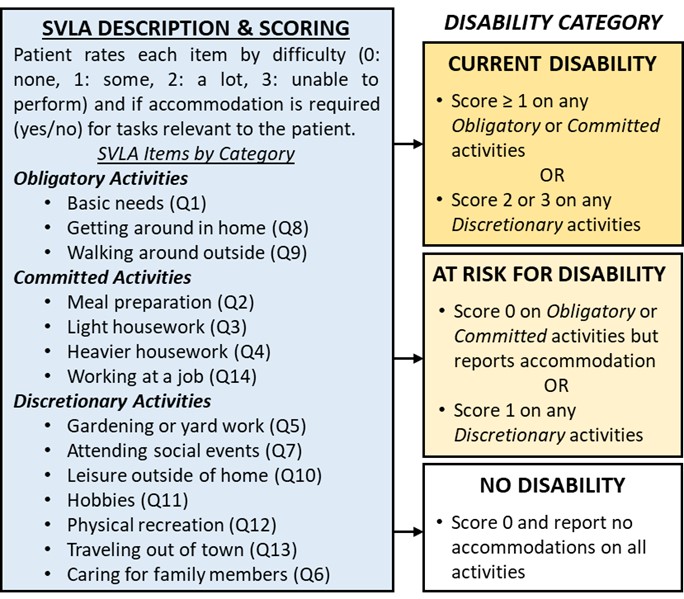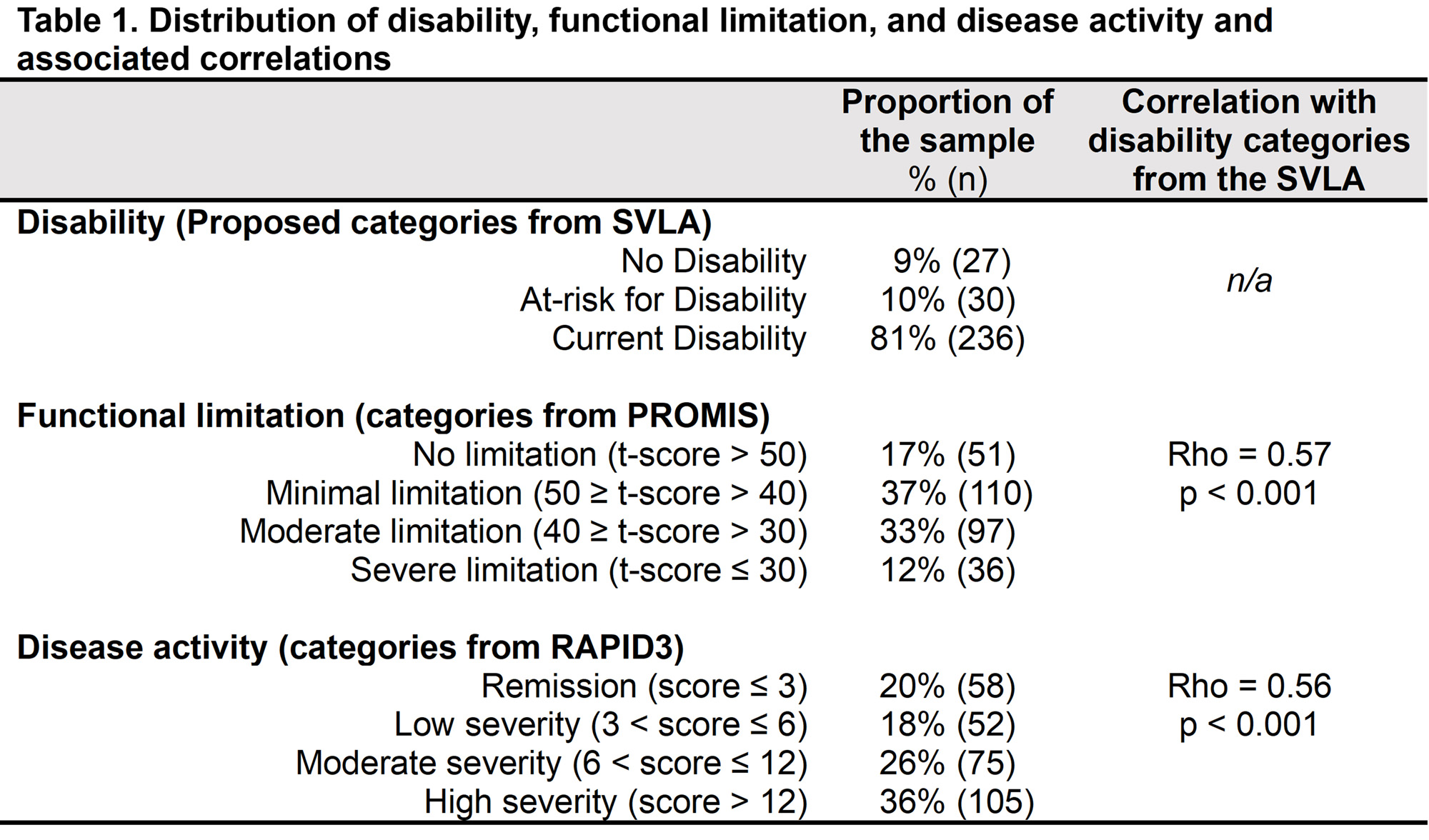Session Information
Date: Tuesday, November 14, 2023
Title: (1973–1976) Orthopedics, Low Back Pain, & Rehabilitation Poster
Session Type: Poster Session C
Session Time: 9:00AM-11:00AM
Background/Purpose: Rehabilitation (i.e., physical therapy and occupational therapy) is indicated to improve function and participation in life activities. Rehabilitation utilization is low among adults with rheumatoid arthritis (RA) despite high rates of functional limitation. A screening tool implemented at routine rheumatology visits may facilitate appropriate referral and utilization. The Short-Valued Life Activities (SVLA) questionnaire is a validated patient-reported outcome measure that uniquely assesses accommodation use with each activity (e.g., extra time, tools, assistance). This is important because individuals who report no difficulty with a task, but use an accommodation, are at increased risk for future disability, which may be amenable to rehabilitation. We propose categorizing disability status using responses on the SVLA, as these categories could guide meaningful referral. As a first step, the purpose of this study was to determine the distribution and construct validity of the proposed disability categories among adults with RA.
Methods: We conducted a cross-sectional survey study. We recruited adults with RA with at least two visits to UNC Health rheumatology clinics for RA, with at least one visit in 2020 or 2021. The survey was available electronically or verbally and included items regarding demographics, clinical information, and patient-reported outcomes. Our primary outcome was disability category (no disability, at-risk for disability, current disability) determined using responses regarding difficulty and accommodation use during 14 valued life activities in the SVLA (Figure 1). Functional limitations were assessed with the PROMIS PF10a, and categorized as no limitations, minimal limitations, moderate limitations, and severe limitations based on established t-score cutoffs. Disease activity severity was assessed with the RAPID3 and categorized as remission, low severity, moderate disease severity, and high severity based on established cutoffs. We used descriptive statistics to describe the distribution of disability categories. To assess construct validity, we calculated the correlation of the SVLA disability categories with the categories of physical function (PROMIS categories) and disease activity (RAPID3 categories) using Spearman rank test. Correlations were interpreted as moderate if 0.40 ≤ rho < 0.60 and strong if rho ≥ 0.60.
Results: Of 1506 potential participants, 294 adults with RA completed the survey (age 56 ± 14 years, disease duration 10 ± 11 years, 82% women). The distribution of the sample in each disability category, functional limitation category, and disease activity category are detailed in Table 1. The disability categories were moderately correlated with functional limitation and disease activity categories (rho = 0.56-0.57; Table 1).
Conclusion: The proposed disability categories had good construct validity with established measures of functional limitation and disease activity in adults with RA. However, over 90% of the sample were categorized as at-risk or current disability with the proposed methods. Further research is needed to develop feasible methods to identify patients for whom rehabilitation referral should be prioritized.
To cite this abstract in AMA style:
Thoma L, Allen K, Jonas B, Katz P. Distribution and Validity of Proposed Disability Categories from the Short-Valued Life Activities Questionnaire [abstract]. Arthritis Rheumatol. 2023; 75 (suppl 9). https://acrabstracts.org/abstract/distribution-and-validity-of-proposed-disability-categories-from-the-short-valued-life-activities-questionnaire/. Accessed .« Back to ACR Convergence 2023
ACR Meeting Abstracts - https://acrabstracts.org/abstract/distribution-and-validity-of-proposed-disability-categories-from-the-short-valued-life-activities-questionnaire/


